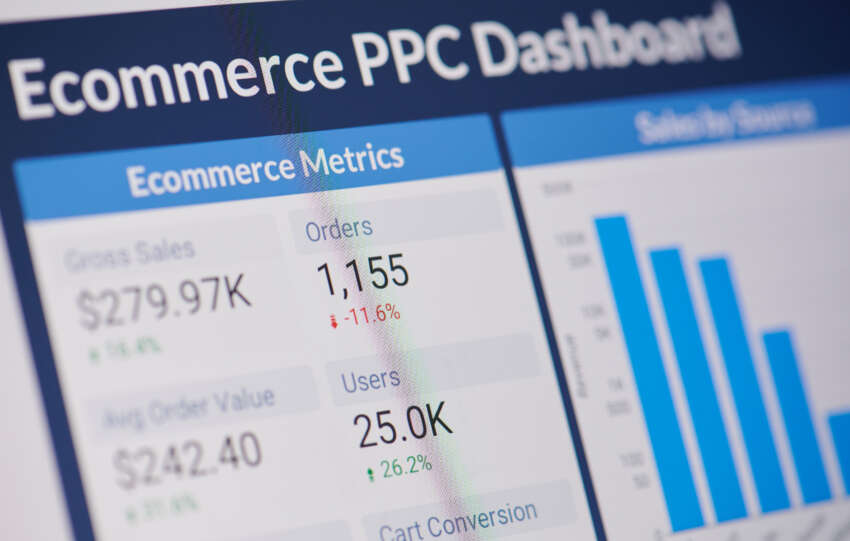8 Affiliate Marketing Strategies for Bloggers (Ultimate Guide for 2021)

$15 billion.
That’s how big the global affiliate marketing industry is.
Apart from helping you understand what affiliate marketing is, I want to help you succeed at it as an affiliate blogger in 2021.
While I can’t go into every detail of how I earn over $70,000 a month from affiliate marketing, this article provides 8 tips to get started with this monetization tactic this year.
Let’s get started.
Understanding Affiliate Marketing and How it Works
Affiliate marketing is the practice of marketing and selling products and services offered by someone else. As an affiliate, you make a commission on those sales.
It is a less intrusive way of marketing in which you promote products/services through valuable content.

Here’s a simple way that it works:
- You sign up to be an affiliate
- Create great content
- Embed an affiliate link to a product you’re promoting
- Readers purchase the product through your link
- You earn a commission on every sale
One of the most significant advantages of affiliate marketing is that you don’t have to bother with product fulfillment, customer support, and other technical aspects of retail or eCommerce. All you need to do is market another company’s product and get paid when someone purchases it.
What Types of Products You Can Sell (And Commissions You can Earn) as a Blogger
If you’re wondering what kind of products you can sell as a blogger, you’ll be quite pleased to know that you can sell pretty much anything. Products you can sell as an affiliate include things like:
- Physical products
- Digital products
- Online services
- Online courses
- SaaS subscriptions
You can use your blog to sell anything and earn a commission from it.
Three main ways you can earn a commission as an affiliate from the products you sell:
- Pay Per Sale
Pay per sale is one of the most common ways affiliates earn a commission. Under this structure, you get paid a percentage of the price a consumer pays for the product or service you’re promoting.
- Pay Per Lead
In this system, your goal is to get your website visitor to go to the webpage you’re promoting and complete a specific action on that page. This could be something as simple as filling in a form or signing up for a trial, or downloading an app. As the name suggests, you get paid for the leads you win for the product or service you’re promoting.
- Pay Per Click
With the Pay per click model, you get paid for the traffic you direct to the merchant’s website.
Pay Per Sale is the most common of these three. And you should also pay attention to the affiliate program’s cookie duration, which is the length of time that you can get credit for the sale after the affiliate link click takes place. A reader doesn’t have to convert to the sale right away. With a cookie duration, an affiliate can get credit for the sale 30, 60, or even 90 days after the click.
Why Should You Become an Affiliate Marketing Blogger?
If you’re thinking of starting a blog or you’ve already started one, affiliate marketing should be one of your primary monetization options.
A few reasons for this include:
Passive Income
Unlike other blog monetization methods that require you to hit certain traffic thresholds, affiliate marketing allows you to monetize your blog quicker than ads. All you need is to ensure you’re driving the right kind of traffic.
This includes targeting keywords that are transactional in nature and have a purchase intent.
You can check out this video where I cover how to plan your affiliate content and why search intent is vitally important.
Cost-Effective Business Model
Affiliate marketing with a blog is one of the best businesses to start, as it requires little capital to start and has super-high profit margins. All you’ll have to invest in is a good website and content. Once you have your tech stack in place, the sky’s the limit when it comes to revenue.
Can Lead to Financial Independence
One of the best perks of generating income through affiliate marketing as a blogger is that you can generate enough revenue to ditch your 9-5. Not only can it lead to financial independence, but it can give you the flexibility to work from wherever you want.
And because brands are looking for publishers to help move their products, you’ll find there are plenty of products you can promote.
8 Affiliate Marketing Strategies to Help You Get Started with a Blogger
With many bloggers already monetizing their blogs through affiliate marketing and more joining the ranks, you must make sure you do it right. Failure to do so will result in your venture flopping.
Let me quickly give you eight foolproof affiliate marketing strategies to help you get started as a blogger.
01 – Start Your Blog the Right Way
This is one of the most important pieces of advice you’ll ever get to help you succeed with affiliate marketing.
To start your blog the right way, you must treat it as a business from the beginning. Make every decision concerning your blog from a business perspective.
And one such element of your blog you must get right from the onset is your niche.
A mistake many bloggers make when deciding on a niche is to simply find a place where their passion and skills intersect. But in a competitive world, you can’t monetize your passions.

That’s why when choosing a niche, think about your personal brand as a startup, not a hobby. You must select your niche based on market research. From your market research, four key business factors should direct your choice of niche:
- Audience Revenue Potential. Find an audience you can serve. One willing to pay for the solutions you offer.
- Affiliate Marketing Potential. Make sure your niche has products your audience is willing to pay for.
- Professional Leverage. Use your professional experience to differentiate yourself from other bloggers in your niche.
- Keyword Research.
You should also choose your niche based on your unique identity, your experience, and how your personal brand can extract value from the market.
What do you want to be known for?
What problems can you help solve?
With so much noise out there, what unique angles can you spin with your content?
02 – Choose Your Products Wisely
Once you’ve established your niche, the next hurdle you must cross is to choose products to promote.

With so many products to choose from in your niche, this could seem a daunting task.
But remember, you’re running a business. And as such, you should choose your affiliate products from a business point of view in the value chain.
Here are a few ideas to help you do that:
Choose Products You’re Familiar With
This is by far the easiest way to get started with affiliate marketing. You can promote products you have used professionally or personally. For example, I worked a lot with SaaS companies and products during my days in the corporate tech world.
I leverage this experience to promote products I’ve already used, like email marketing software, CRMs, and other platforms to sell online courses and host webinars.
So first, you can also leverage your personalánd professional experience to help you choose products to promote. This could be anything from courses you’ve found helpful to physical products you love. The good thing about affiliate marketing is that you can leverage any experience you have to sell a product.
And you don’t have to be an expert to promote a product. The truth is, most major affiliate sites haven’t tried every single product they promote – they’re just really good at SEO.
Find Profitable Products Via Affiliate Networks
Even if you don’t have any experience with some products, you can still succeed as an affiliate marketer.
You can leverage affiliate networks to help you find products easier. If you’re wondering, an affiliate network is a platform that acts as the middleman between you (the affiliate) and the merchant. They also stand in as a manager for both you and the merchant.
The most significant advantage of joining an affiliate network is that they curate many products for you to choose from. Examples of affiliate networks include:
Most affiliate networks have millions of products under hundreds of categories. To ensure you pick products that your readers will love, you must:
- Try out the products yourself.
- Research the product and merchant thoroughly.
- Read reviews from actual users.
- Favor products with a money-back guarantee.
Before you sign up for an affiliate network, make sure to read the fine print. Each affiliate network has its way of operating, so make sure you know what you’re getting yourself into before signing the contract.
03 – Set Goals for Your Business
An important aspect of business many bloggers forget is that of setting goals. Once you’ve set up your blog (the right way), chosen a niche, and applied to be an affiliate, you need to set goals. These could be:
- Traffic goals. For example, 500 visitors to your blog in 6 months.
- Revenue goals. An example could be $1000/month in 6 months.
Make sure whatever goals you set are SMART goals. In other words, your goals must be:
- Specific
- Measurable
- Actionable
- Relevant
- Time-bound
Setting goals is important as it will give you something to work towards. It will give you the momentum you need to succeed with your affiliate marketing.
04 – Promote Your Affiliate Products
Now that you’ve set your goals, it’s time to achieve them. It’s time to join affiliate programs and begin promoting products to generate revenue. Here are a few tips to help you do just that:
Start With Keyword Research
To successfully promote your affiliate products, you’ll need to know the keywords they use to search for the products you offer. As a blogger, this is important as most of your traffic comes from search engines.
So make sure to research relevant keywords that not only drive traffic but also fulfill user intent. User intent simply means the reason someone is searching for that particular keyword. The four main types of user intent include:
- Informational Search Intent. Users with informational intent are looking for answers to a question.
- Transactional Search Intent. Users are ready to perform an action on your blog, for example, buying a product or downloading a freebie.
Coupling your keyword research to user intent will help you focus your energies on keywords that have higher chances of you driving the right kind of traffic. Of course, that can only mean traffic made up of people who are more likely to turn into customers.
Create Valuable Content
Armed with your keywords, you can now create the content you’ll use as a vehicle to promote your products.

However, to ensure that your content does a great job of promoting your products, it must be:
- Discoverable. Use your keywords strategically to ensure your content ranks well on search engine results pages (SERPs). This means using your keywords in the headline, subheadings, and naturally in your content.
- Informative. Create detailed blog posts or even consider hosting a podcast that answers people’s questions and solves their problems. Doing so will help build trust, an essential ingredient in making a sale.
- Engaging. Content that’s engaging ensures that your readers consume it in its entirety. It also increases the chances of them taking you up on your offer.
As long as your readers find your content valuable, they’ll keep coming back. Not only that, but they’ll become repeat customers. And repeat buyers are the pillar of every successful business.
Of course, to sell your product, you must link to it naturally in your content. Make use of plugins like Pretty Links or ThirstyAffiliates to help you cloak, manage, and automatically add affiliate links to pages of your blog.
With close to 4 billion active users, social media has become an integral part of life for most people in the world.

As a blogger, connecting with your target audience on their favorite social media platforms is one of the best ways to get visibility and drive traffic to your blog. For it to work for you, you must:
- Optimize your profile to reflect what you do and the niche you operate in
- Include a link back to your blog in your profile
- Share valuable content
- Engage in conversations
A good social media presence will also help establish you as an authority in your niche. You may want to outsource this aspect of your marketing to a freelance social media manager. Doing so will give you more bandwidth to focus on the core aspects of your business.
05 – Capture More Sales Using Exit Intent Pop-ups
As the name suggests, exit intent pop-ups are a form of ad that appears on a web page when a visitor is about to leave.

These are important as they help you:
- Display a product for the last time before the visitor leaves
- Collect lead data from your blog visitors by displaying a signup form
Whichever way you decide to use your exit intent pop-ups, they will undoubtedly help you reach your affiliate marketing goals. If you haven’t installed a plugin that enables you to capture visitors before leaving your blog, you can use tools like OptinMonster.
For your exit-intent pop-ups to be more effective:
- Personalize them for each piece of content
- Have a strong, benefit-driven call-to-action
- Use the fear of missing out (FOMO) in your copy
While it may be a last-ditch effort, exit intent pop-ups do work wonders in converting undecided visitors.
06 – Leverage Your Email List
One thing you should start doing as soon as you launch your blog is to build an email list. Email marketing for bloggers is great for driving affiliate sales as you can use email to:
- Drive traffic to your blog posts
- Include affiliate offers in your emails
The best part about email marketing is that your subscribers are already warm leads. They are interested in your content and products, making them more likely to convert into customers.
No matter what the doomsayers may preach, email is far from dying. It should make up an integral part of your marketing strategy.
07 – Track Your Metrics
Most affiliate marketing platforms give you analytics on how your audience interacts with your links. However, it’s also essential that you use an independent tool to monitor link activity. One such free tool you can use is Google Analytics (GA).
Tracking and analyzing your links is vital as it will help you gain insight on:
- Affiliate products your audience resonates with the most.
- Pages that convert best (so you promote them more).
- Pages that don’t sell (so you can optimize them).
- The amount of traffic and revenue you generate for merchants. If you can drive more traffic and revenue, you negotiate for a better deal.
A good affiliate marketer always keeps tabs on critical data. And the most vital data that can help you sell more is how your audience interacts with your links.
08 – Build Backlinks to Your Affiliate Articles
One of the most crucial affiliate marketing tips you should value is building backlinks to your articles. Backlinks are essential as they help you rank higher SERPs and build your authority. A few ways to build backlinks include:
- Guest post on other sites.
- Use your posts to answer questions on relevant forums.
- Create resource articles that others will want to link to.
- Mention influencers in your niche and let them know you mentioned them in your post.
- Create roundup posts. Participants are likely to link back to them and share on social media.
A good backlink strategy will help you drive targeted traffic to your blog. It’s an essential component of a blogger’s affiliate marketing sales funnel.
Put These Affiliate Marketing Tips to Work and Let’s Make Some Money
Affiliate marketing and blogging are a match made in heaven. After all, you already have the content marketing aspect nailed down. All you need is to add transactional keywords and affiliate marketing to the mix, and you’ll soon have another powerful blog revenue stream.
But to have the edge over the competition, you should put some of these affiliate marketing tips to use. They’re a winning combination for turning your blog into an affiliate marketing machine that drives traffic and revenue.





